1lumen selects and reviews products personally. We may earn affiliate commissions through our links, which help support our testing.
Sofirn IF22A review
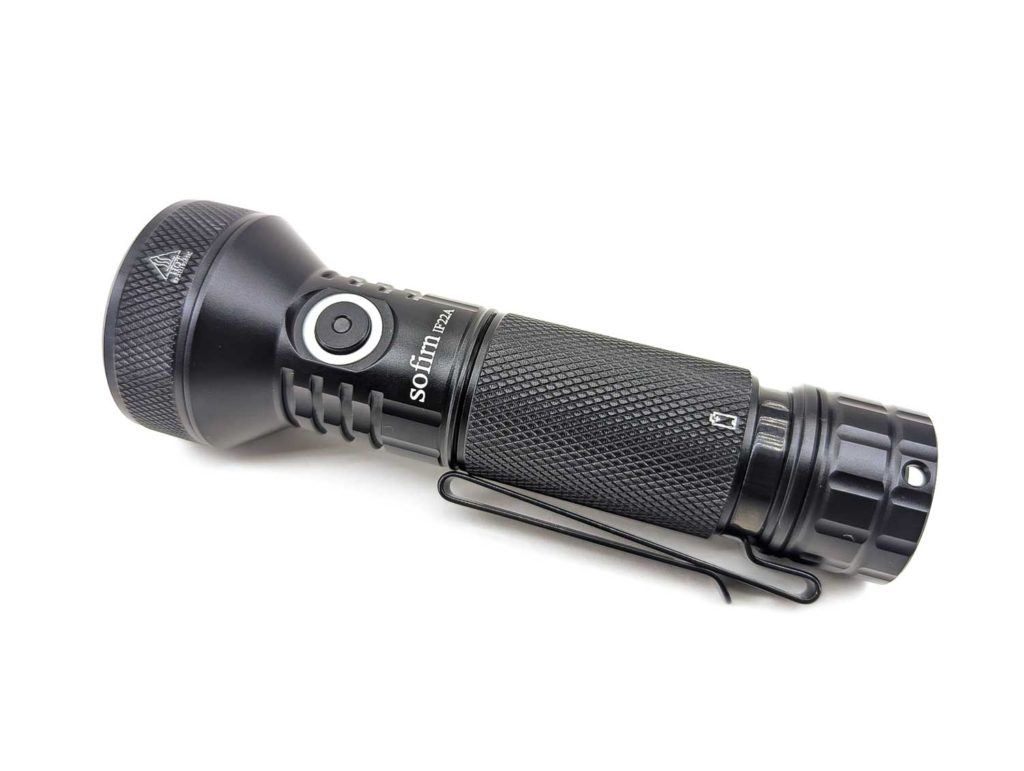
Sofirn IF22A specifications
| Brand/model | Sofirn IF22A |
|---|---|
| LED | Luminus SFT-40 |
| Lumens | 2,100 lumens |
| Beam intensity | 121,333 cd |
| Battery config. | 1*21700 |
| Material | Aluminum |
| Modes | 5 |
| Blinkies | Strobe |
| Reflector | TIR optics |
| Waterproof | IPX8 |
| Review date | December 2021 |
Introduction:
If you’ve spent any time around flashlight forums, you should be no stranger to Sofirn. They’ve been around for several years and have released many nice lights at very affordable prices. In addition to being known for their wallet-friendly flashlights, Sofirn is renowned for their community projects they’ve produced alongside members of the BLF community. These projects have ranged from the diminutive C01 and C01S to the large and powerful Q8 and SP36 soda-can style lights.
Sofirn has recently released a new model called the IF22A alongside a sister model called the IF22. The IF22A, which I’ll be reviewing, utilizes a large smooth TIR while the IF22 is reflector based. The IF22A is a uniquely designed 21700 light with a simple UI.
Package quality.
The Sofirn IF22A arrived in a very Sofirn-looking package, typical of their non-tube lights. It’s a brown cardboard box with bold “Sofirn” lettering across the top. Nestled inside the foam-lined box was:
- Sofirn IF22A
- Battery (inside the light)
- 18650 adapter
- USB-A to USB-C cable
- Spare o-rings
- Lanyard
- Manual
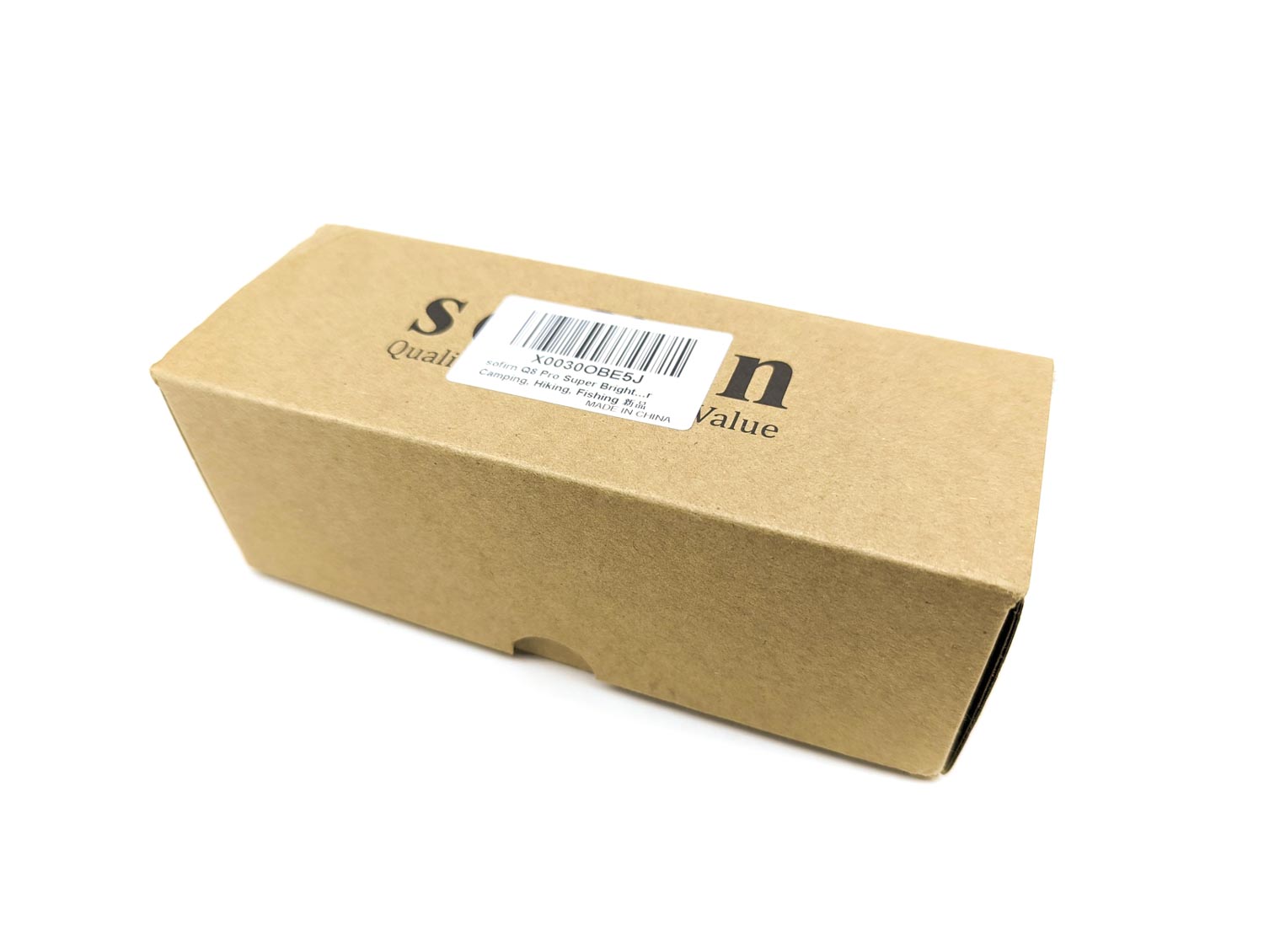
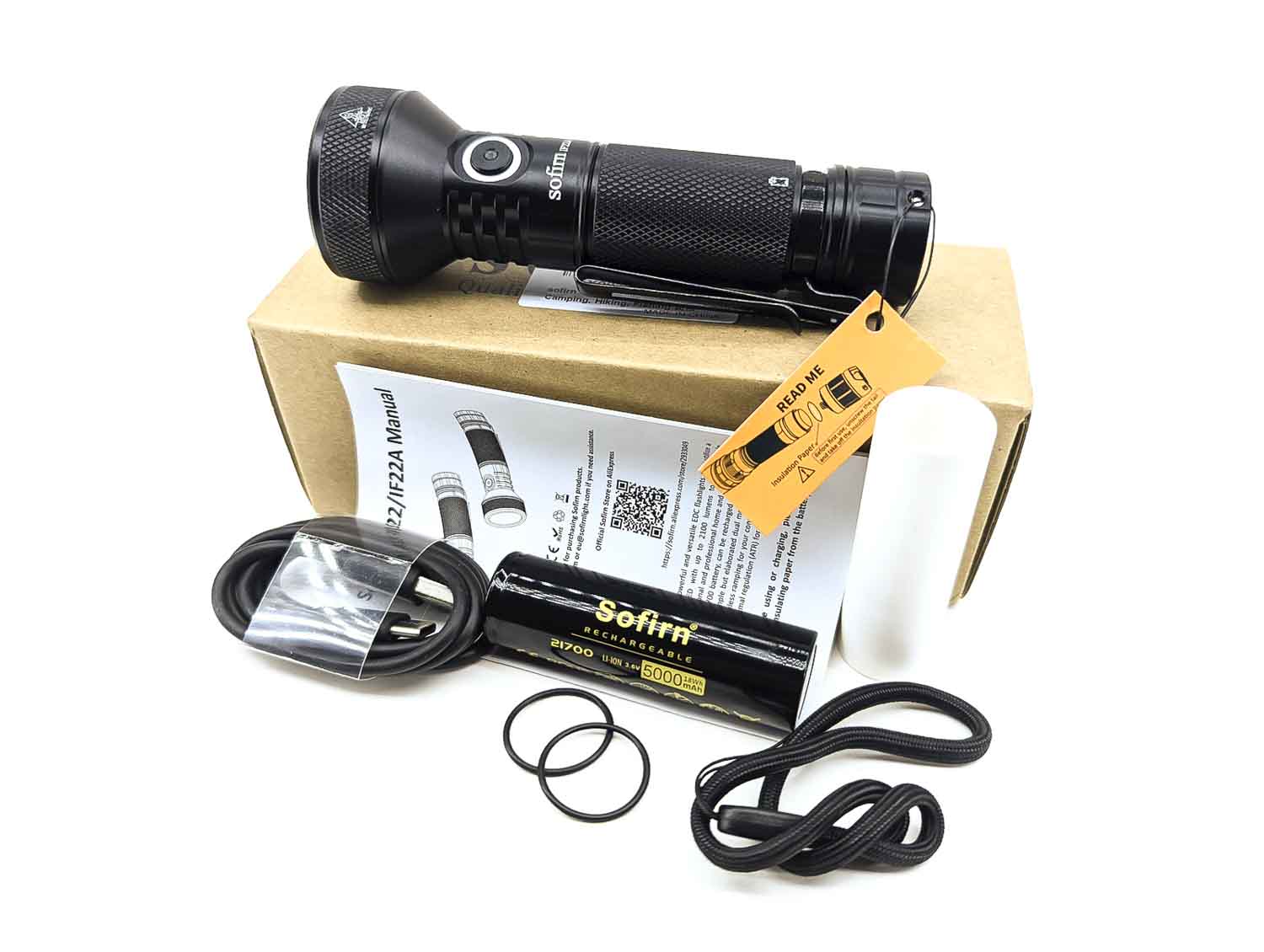
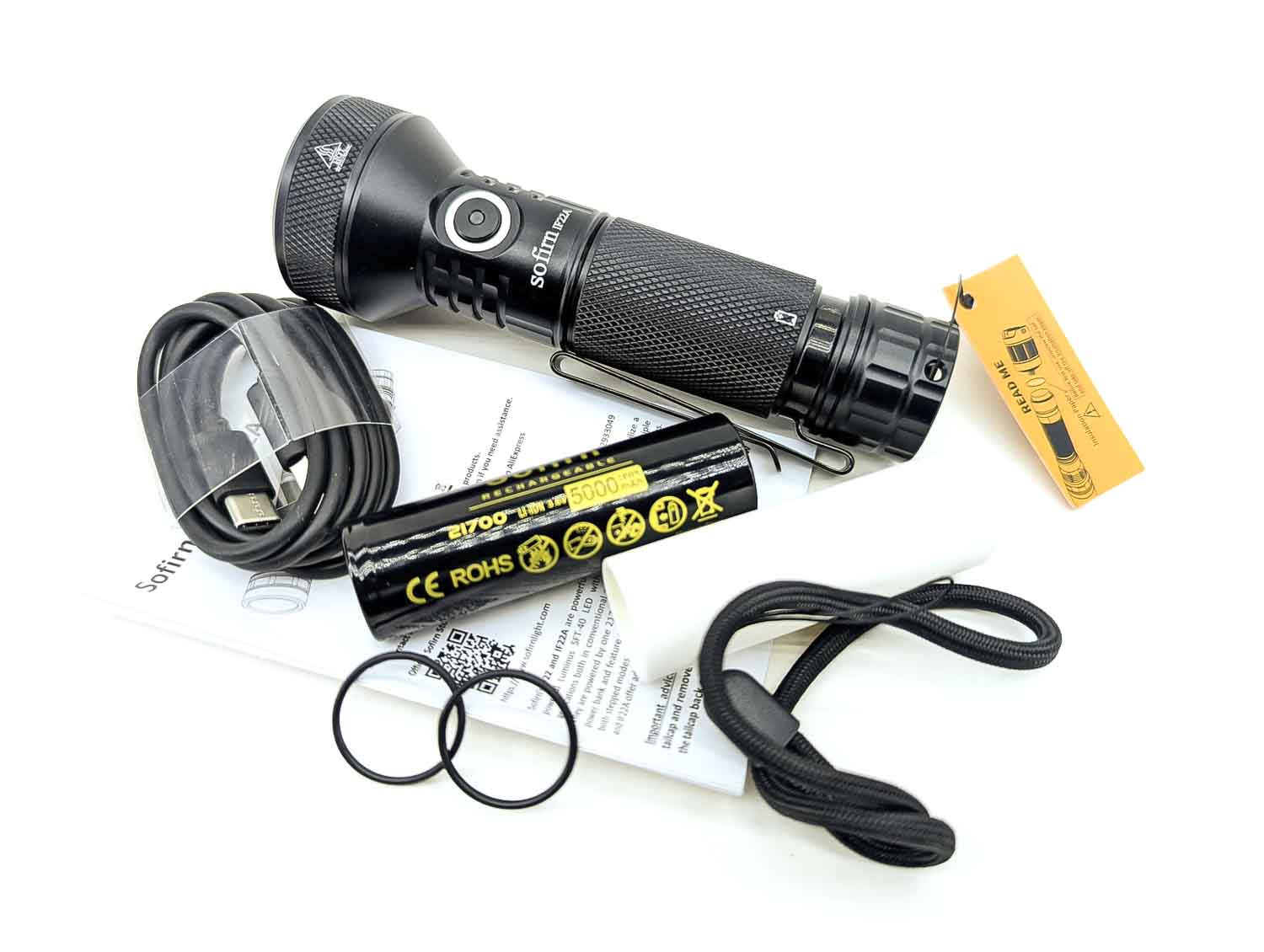
Flashlight in use
Being a 21700-based light, the tube sits very comfortably in the hand. The IF22A is fairly smooth but there’s enough machining going on to keep it from being slippery. While the battery tube is knurled, the tailcap has a block design to aid in tailcap removal. This block design is carried through to the head of the light, just below the heat sink fins.
As mentioned in the intro, the overall aesthetic of the Sofirn IF22A is pretty unique. There’s the streamlined body tube and tailcap, but the transition to the head of the flashlight is steep – there’s a pretty dramatic slope leading up to the bezel area. Overall, a bit unusual but not off-putting… just different.
There’s a single switch, a very firm e-switch situation on the head of the light. It’s well positioned, though maybe a bit difficult to find in the dark due to the rounded nature of the design. The switch is slightly recessed which might help some with accidental activation. The tail is completely flat, so it does tailstand well. The lanyard is pretty standard. The clip is sturdy and nearly deep-carry. The clip’s main loop is generous and could fit nicely over a hem in jeans. It does happen to be a bi-directional clip, which I find a bit odd. I normally think about those for small lights that you could clip to the brim of a hat, but the IF22A is certainly too large to be doing that.
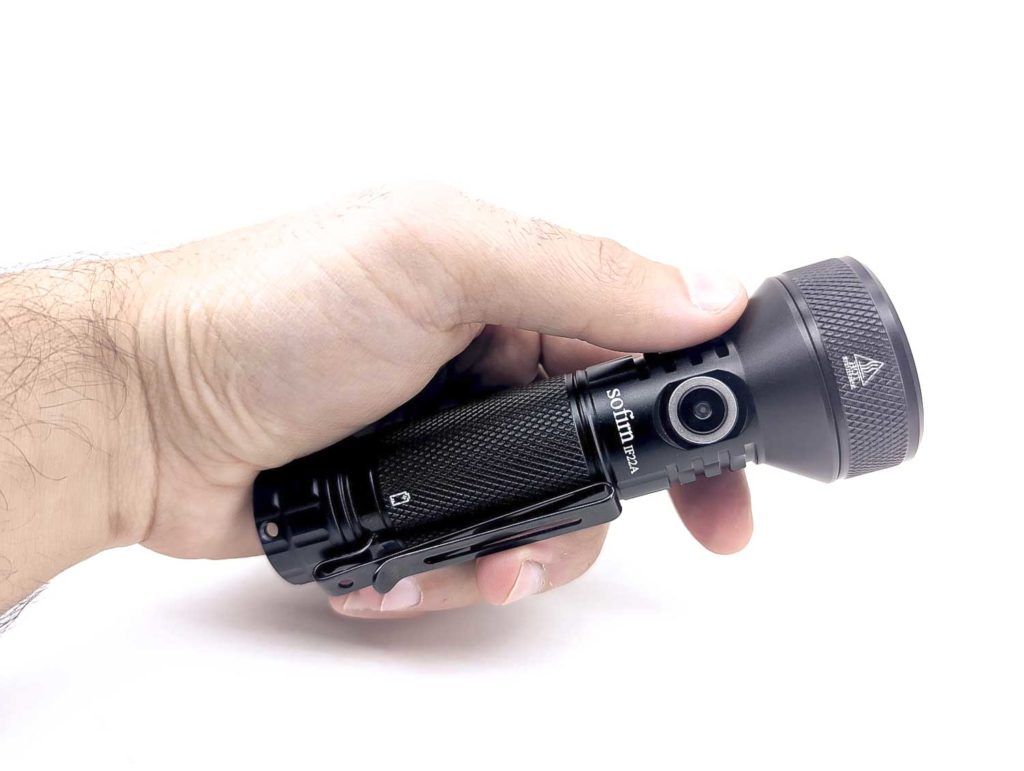
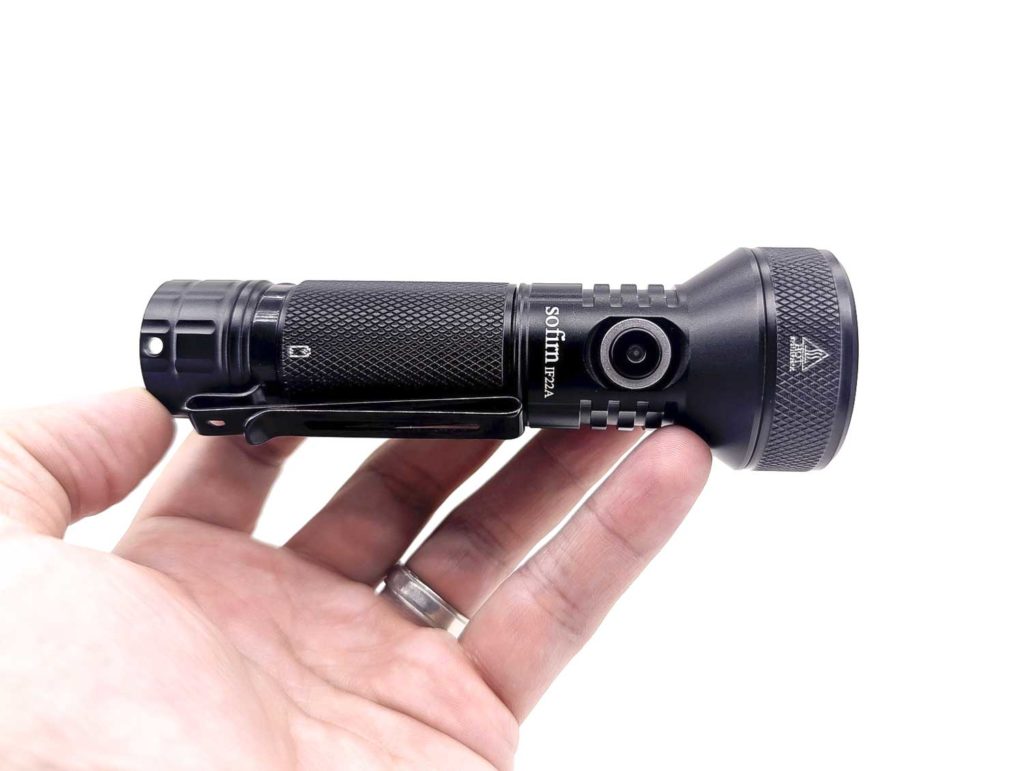
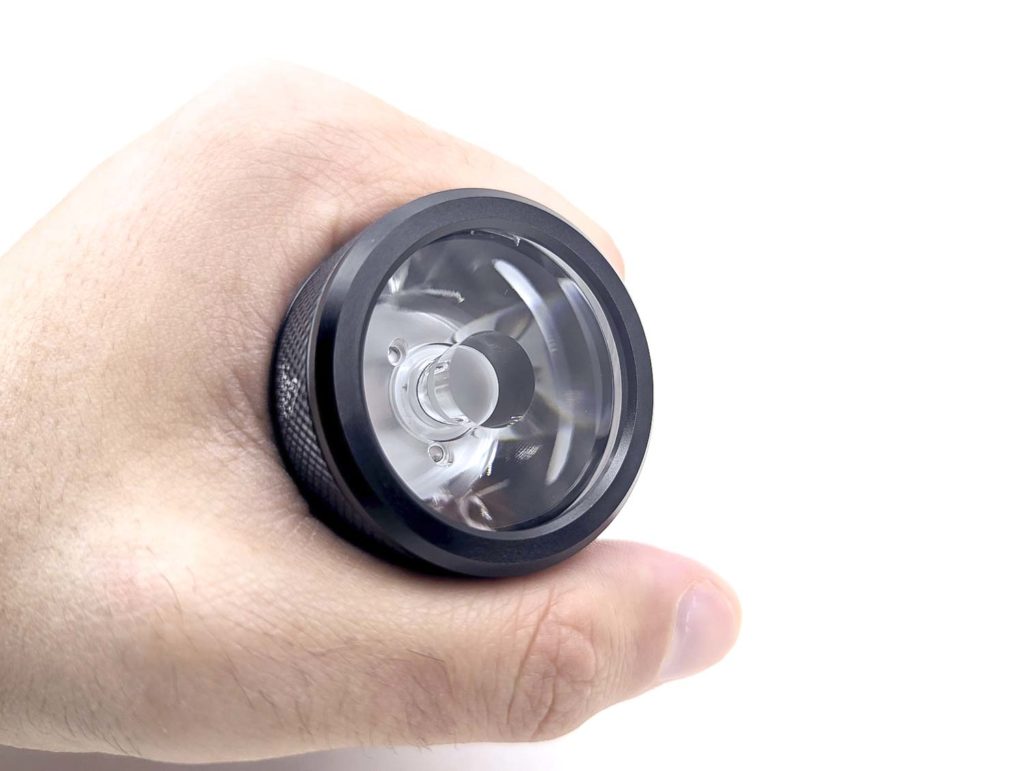
Build Quality, and Warranty
The Sofirn IF22A is CNC’ed from a piece of aerospace-grade 6061 aluminum. It is said to be Hard Anodized Type III (HA III). If you’ve ever had a black Sofirn light, you should be familiar with the overall appearance of the anodizing – it’s not really shiny, but not exactly matte either. The machining is quite smooth and the heat sink edges have a very minor chamfer to them, just enough to keep them from feeling rough. The threads at each end of the battery tube are anodized, square-cut, lubed, and very smooth feeling. Speaking of the battery tube, you can reverse it if you’re inclined to do so.
Sofirn’s warranty is as follows:
- Within 30 days of purchase: Contact the original seller for repair or replacement.
- Within 2 years of purchase: Contact Sofirn for repair or replacement.
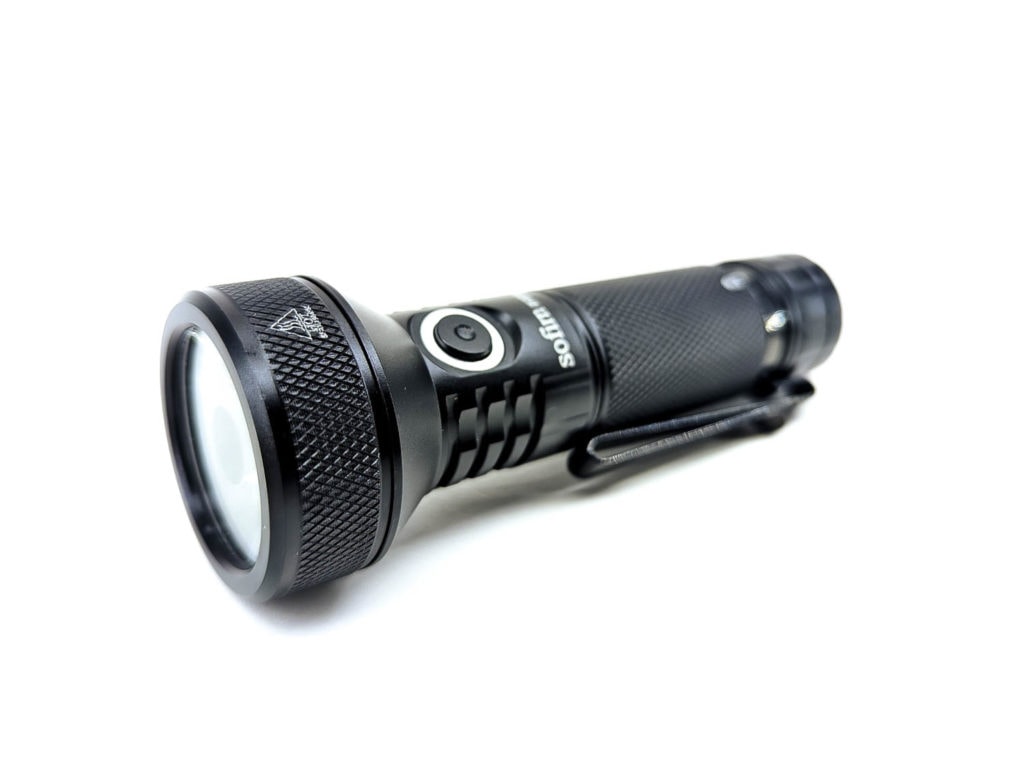
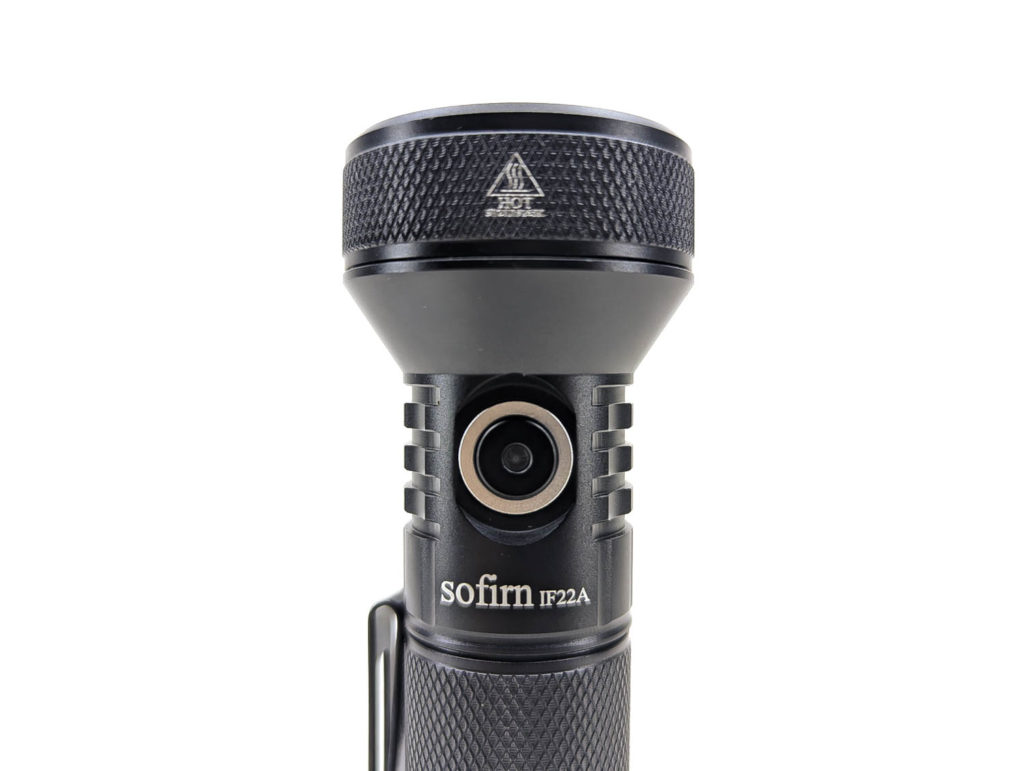
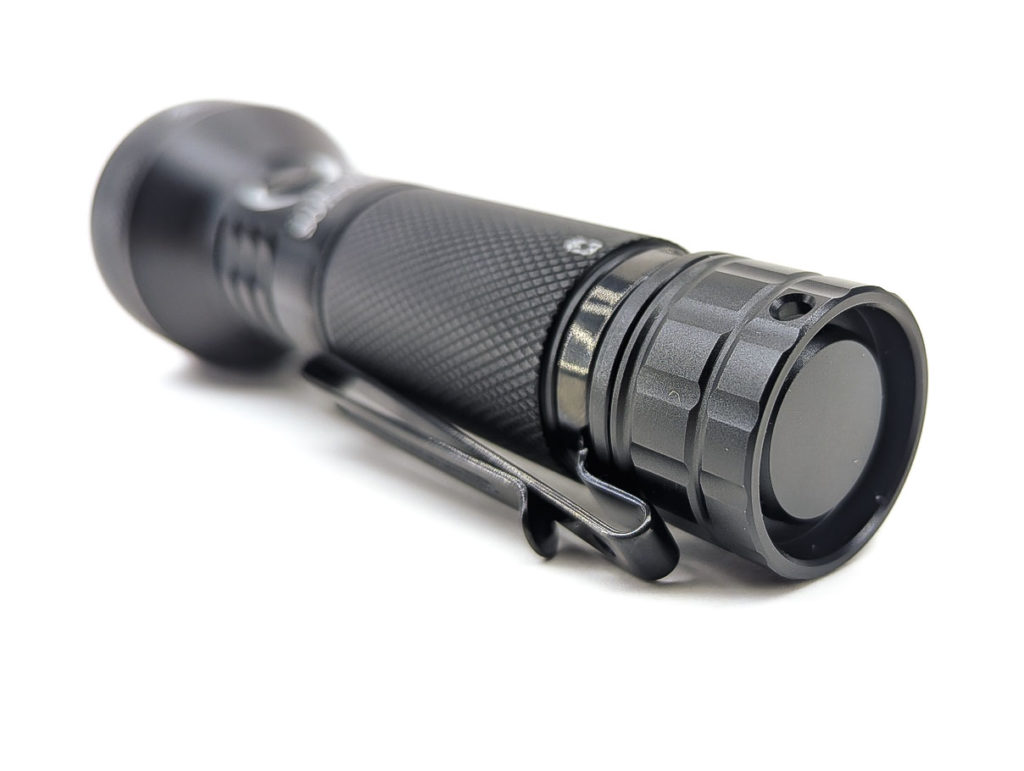

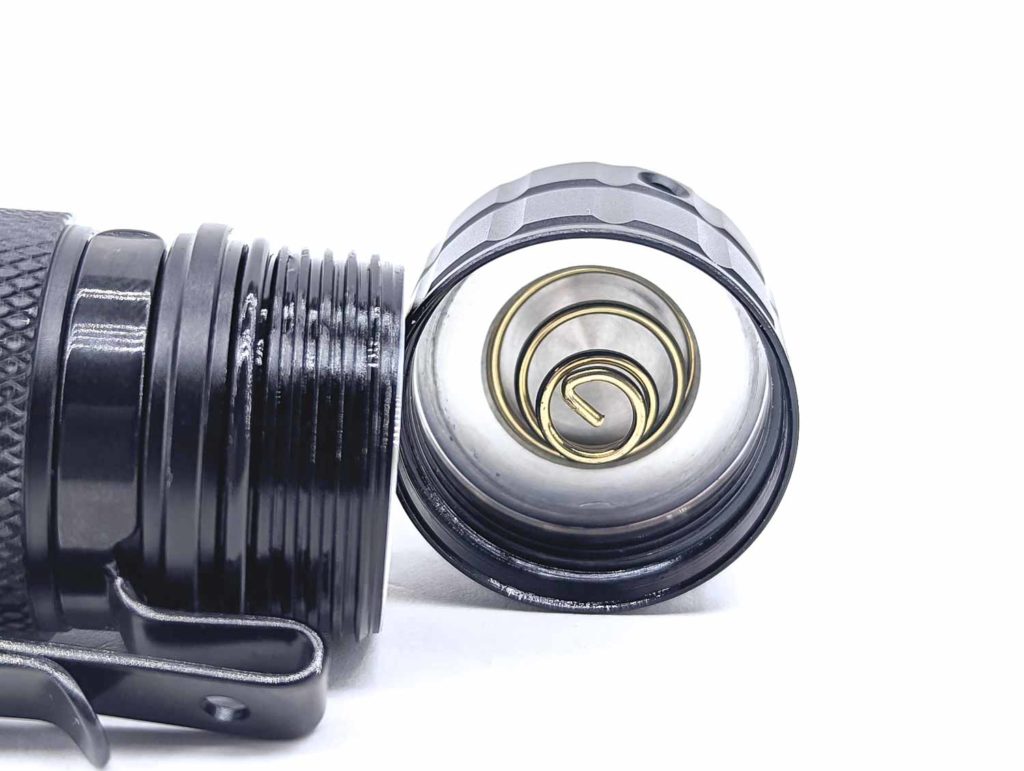
LED, Lens, Bezel, and Reflector
As mentioned previously, this Sofirn comes in two variations: the IF22 (reflector) and this IF22A (TIR). Sofirn doesn’t say much about the optic besides that it’s a 5° TIR optic. It very much reminds me of the ones you’d see in the Manker MC13 and Acebeam L35, among others.
The LED that’s hidden behind that optic is the new-kid-on-the-block Luminus SFT-40. That LED is currently only available in 6500K 70-CRI, so it’s no secret what to expect in terms of the CCT and CRI. Think of this as being akin to a domeless SST-40, but beefed up and without any loss of efficacy from not having a dome. That itself is pretty impressive.
With Sofirn pairing that 5° TIR optic and the powerful domeless SFT-40 emitter, the IF22A is a very throwy little light with almost no spill, thanks to the optic.
Using an Opple Light Master Pro, I obtained the following measurements:
- CCT: 6302
- CRI: 67.1
- DUV: 0.0048
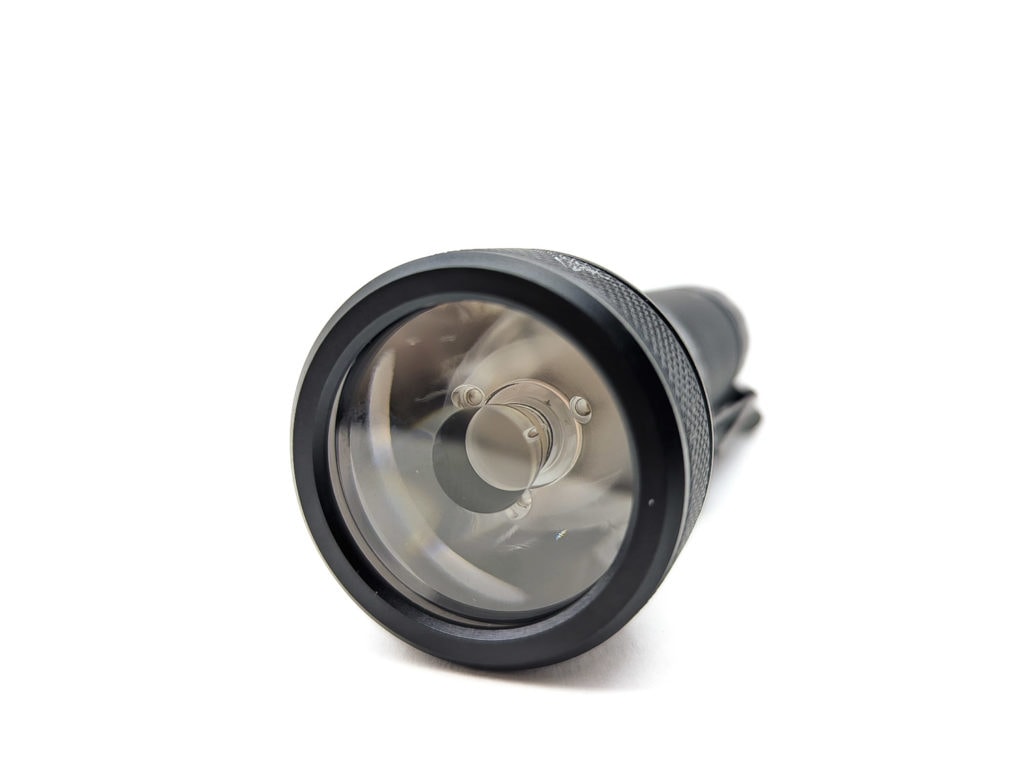

Dimensions and size comparison
- Length: 127.1 mm / 5.0 inches
- Head diameter: 42 mm / 1.65 inches
- Body diameter: 28 cm / 1.1 inches
Weight:
- Without cells: 120 grams / 4.2 oz.
- With cells: 193 grams / 6.8 oz.
Flashlight comparison
Mid-sized Sofirns, left to right: Sofirn IF25A, Sofirn SC31 Pro, Sofirn SP35, Sofirn IF22A
Throwy TIR lights, left to right: Manker MC13, Sofirn IF22A, Acebeam L35

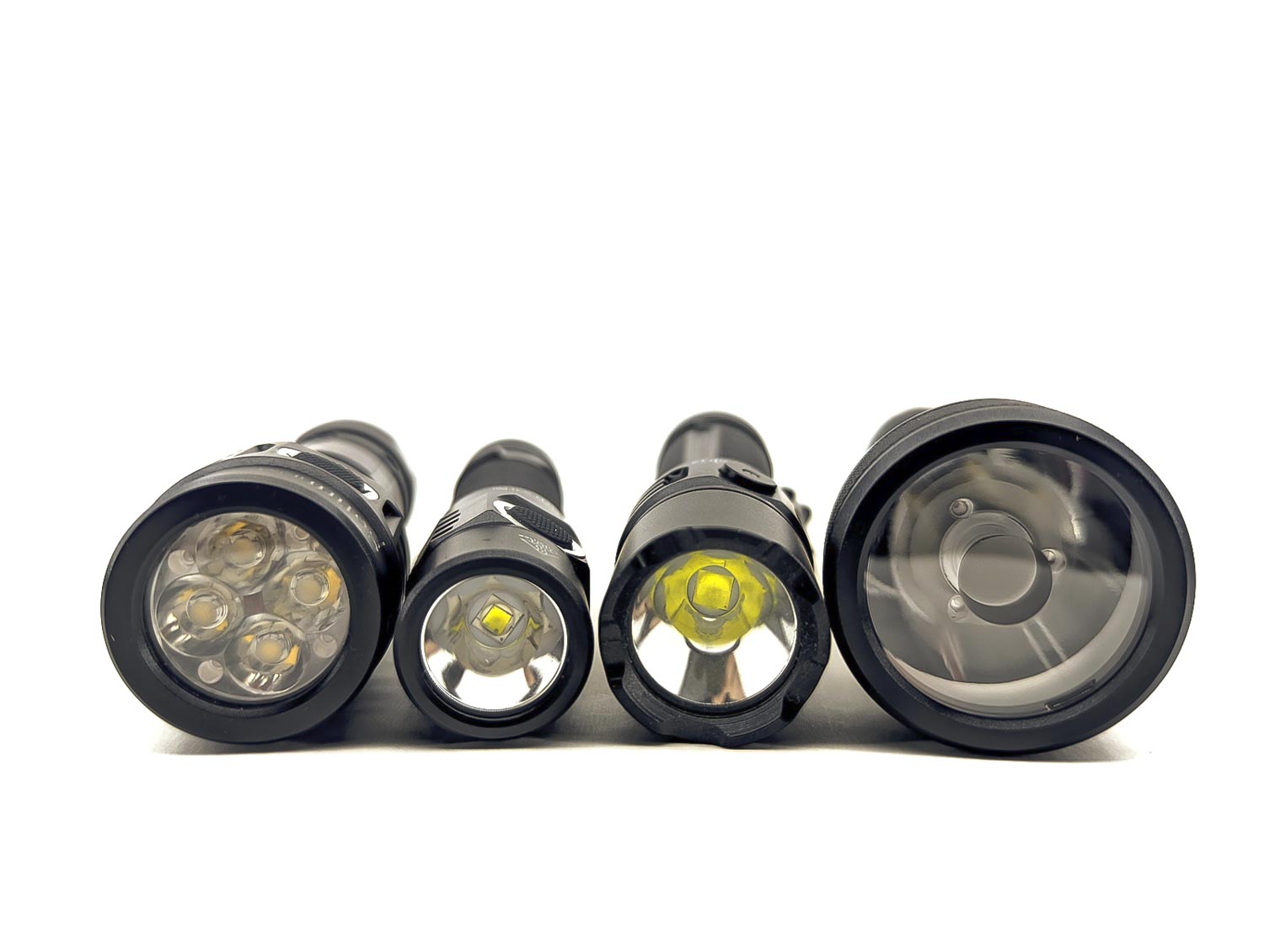
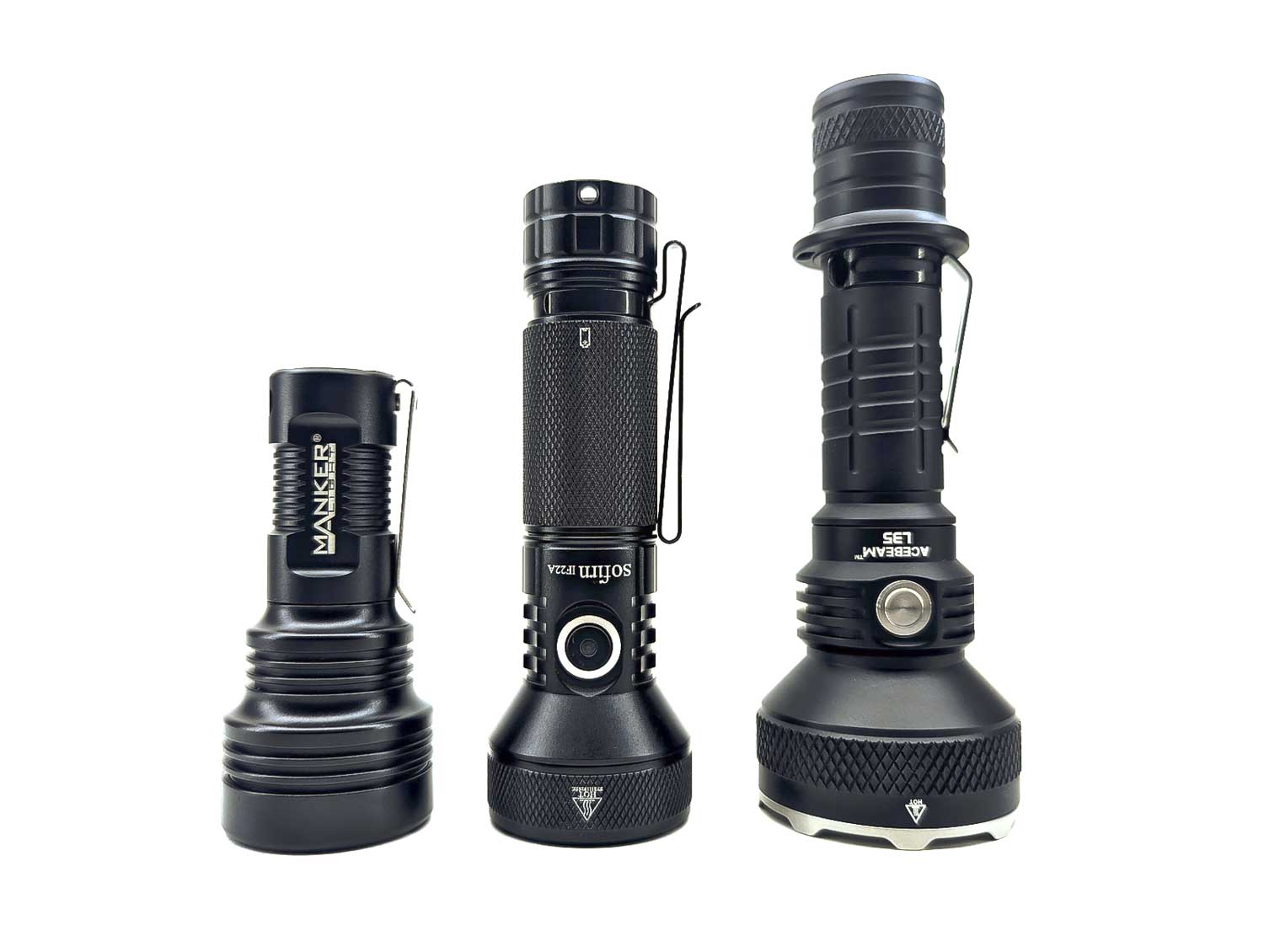

Driver & User Interface:
Sofirn has embraced Anduril for a lot of their lights, but this is not one of them. That’s ok, sometimes it’s refreshing to see a simple and well-executed UI.
Available modes: Moon, Low, Medium, High, Turbo
From OFF:
- Press and Hold: turn on in Moon
- Single click: turn on in last used mode
- Double click: Turbo
- Triple click: Strobe
- 4x click: Lock-out
From ON:
- Press and Hold: ramp up
- Single click: turn off
- Double click: Turbo
- Triple click: Strobe
- 4 clicks: switch between Ramping and Stepped
Mode memory:
- Yes, there is mode memory for Low, Medium, and High
Shortcuts:
- To Moon: press and hold
- To Turbo: double click
- To Strobe: triple click
Low voltage warning:
- When the battery is under 3.0 volts, the indicator in the switch will flash
Strobe/blinkies
- There is a Strobe mode, activated by a triple click from Off or On
Lock-out mode:
- Lock-out mode can be accessed by 4x clicks from Off
- Clicking the button while locked out will cause the light to blink, indicating that it’s in Lock-out mode
- Lock-out features momentary Moon mode (hold the button)
- To exit Lock-out, just do another 4x click
PWM
- Yes: Low, Medium, and High have 16 kHz (quite fast) PWM that’s not visible to the naked eye.
- Moon does not exhibit PWM, it must be powered by a separate low-power channel; perhaps an in-line resistor
Additional info on the UI:
- Sofirn did a good job of implementing a well-rounded but simple UI.
Batteries & Charging
This Sofirn IF22A came with a 5000 mAh 21700 battery preinstalled. Other options include a 4000 mAh battery as well as no battery. The battery is a flat top and not protected. It is likely a rewrapped Lishen LR2170SD which is a respectable cell.
Sofirn says that batteries between 70 mm to 72.5 mm long should fit. I tried fitting in a long, protected 21700 with built-in USB-C charging and it would not fit: too long. But other non-protected cells should fit fine. While I don’t have any to test, it looks like a non-protected button top cell should fit. Short protected cells might as well.
The Sofirn IF22A has built-in USB-C charging. While it ships with a USB-A to USB-C cable, USB Power Delivery (USB-C to USB-C) charging works great. The IF22A can also be used as a powerbank to charge other devices such as your phone when they run out of juice.
A tale of two lights…
When using my 33W USB-C charger on my first review unit, I observed a 16.8 watt charge speed: 4.92 volts at 3.42 amps. That’s a really fast charge speed. The body of the light felt warm but not hot during the charge. It took 2 hours and 52 minutes to complete the charge with the 5000 mAh cell. The indicator LED in the switch is supposed to go from flashing red while charging to solid green when done. When I first started changing the LED wasn’t lit at all. It did turn on a few minutes later. I saw the blinking red, but when the charge was done, the LED turned off altogether – it didn’t turn green. It looks like BLF member Tactical Grizzly ran into a similar problem with the charging indicator. When the charge cycle was complete, I removed the cell and measured its voltage: it was at an alarming 4.86 volts. I’ve never had a lithium-ion battery go so high. I thought maybe this was a fluke so I discharged the battery and re-ran another charge cycle. It did the same thing. But I noticed that charging never really stopped. After the red charging light turned off, it continued charging at 0.6 watts. When I pulled the cell out, it measured 4.89 volts.
After bringing this glaring issue to the attention of Sofirn, they quickly had my RMA the unit and sent me a new one.
The charging on the second review unit was night-and-day different. The charging indicator worked exactly as expected the entire time. It blinked red as soon as I plugged it in and it switched to solid green as soon as charging was done. It also completely stopped drawing power, unlike the last unit. The highest charge power I noticed was 12.4 watts (2.43 amps at 5.1 volts). The charge cycle completed in 2 hours and 25 minutes. The cell voltage at the end of the charge was a nice 4.15 volts. Charging on this second unit worked flawlessly and exactly as expected.
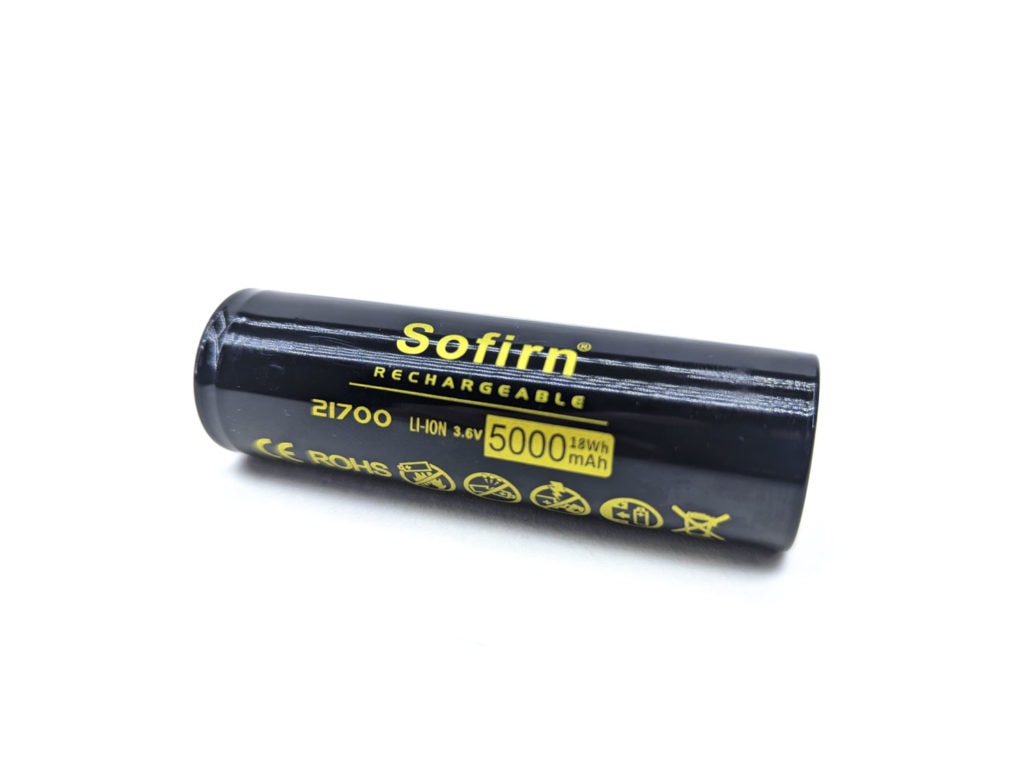
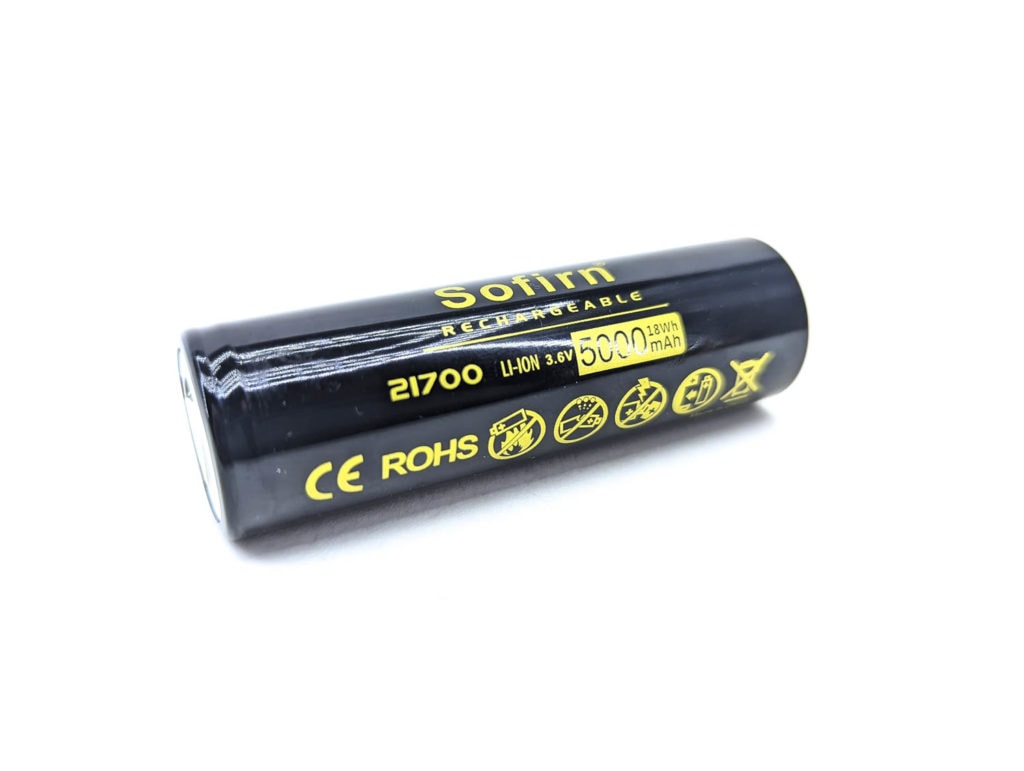
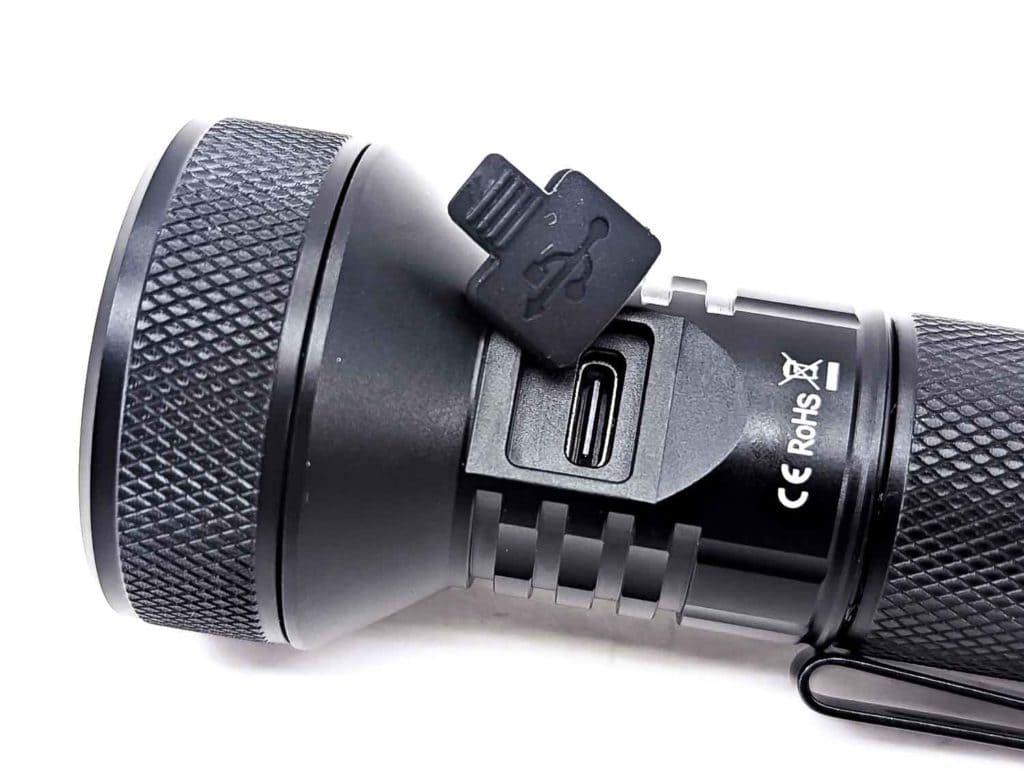
Performance
Lumen measurements:
For current measurements, an ANENG AN8008 multimeter and UNI-T UT210E clamp meter were used. Lux was measured by a UNI-T UT383 BT at 10 meters. Lumens were measured in a homemade lumen tube using a TSL2591 sensor, calibrated with a Maukka calibration light. The temperature was monitored with a MLX90614 IR temperature sensor. The included 5000 mAh Sofirn battery was used.
Lumen measurements (for each mode)
| Mode | Amps at start | Specs | start | 30 sec | 10 min |
|---|---|---|---|---|---|
| Moon | 3 mA | 1 | 0.5 | – | – |
| Low | 209 mA | 30 | 66 | – | – |
| Med | 730 mA | 320 | 249 | 246 | 245 |
| High | 3.5 A | 1000 | 880 | 875 | 536 |
| Turbo | 8.9 A | 2100 | 1853 | 1735 | 537 |
Parasitic drain:
- 104 µA
Runtime graph
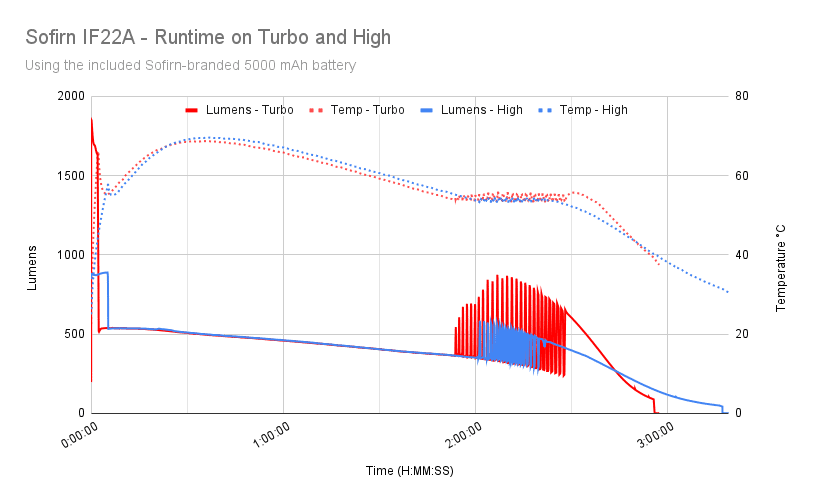
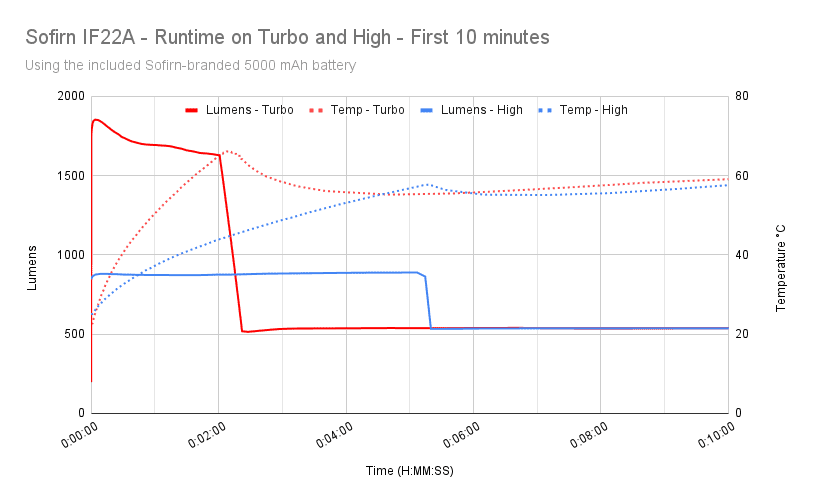
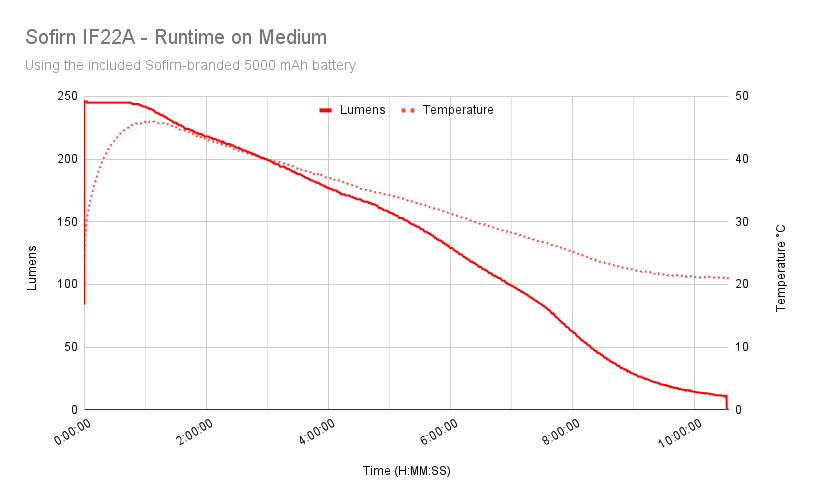
The Turbo output test began at 1853 lumens. The output sagged a little bit before dropping drastically at 2 minutes down to 518 lumens. From there, it slowly dropped in output until 1 hour and 54 minutes when it went into an erratic roller coaster of up-and-down output for the next 34 minutes. At 2 hours and 28 minutes it pulled out of the roller coaster and began the final ramp down, where it turned off at 2 hours and 55 minutes. The maximum observed temperature was a toasty 68.7°C.
The High mode test exhibited similar, albeit more tame, behavior. It started at 880 lumens before dropping down to 533 lumens at 5 minutes and 15 seconds. At that point, output tracked very similar to the Turbo test. It too had a roller coaster event, though the peaks weren’t as high and the event didn’t last as long. The light eventually shut off at 3 hours and 17 minutes, having hit a peak of 69.6°C.
Medium mode was less eventful. It began at 249 lumens. There was no step-down, but the output did ramp down slowly throughout the course of the test. The light shut off at 10 hour and 31 minutes, having hit a max temperature of 46.0°C. At the end of the test, the battery was at 2.76 volts – a bit low, but not terribly so.
In general, the output seems a bit lower than what Sofirn’s specs are. However, Sofirn only published a single set of lumen ratings for both the IF22A and the IF22. Since the reflector version (IF22) would be expected to have less lumen loss than a TIR optic, I’m guessing those lumen ratings come from the IF22 version.
For a light that supposedly features Advanced Temperature Regulation (“ATR”), I’m a bit concerned to see temperatures hitting nearly 70°C. That’s about 10-15° hotter than I’d like to see.
Throw numbers:
| Mode | Specs | Candela measured | Meters | Yards |
|---|---|---|---|---|
| Low | 2310 cd | – | – | – |
| Medium | 20,008 cd | 13,500 cd | 232 | 254 |
| High | 67,250 cd | 52,400 cd | 458 | 501 |
| Turbo | 121,333 cd | 108,800 cd | 660 | 722 |
Overall, these throw numbers are pretty close to spec, but a bit short. They’re within 10% which could entirely be explained by the variation of my inexpensive lux meter.
Beamshots
Beam shots of the building are taken at 15 m (16 yd) using a Pixel 3 set to ISO 200 with 1/10 second exposure time.
Beam shots of the playset are taken at 30 m (33 yd) using a Pixel 3 set to ISO 200 with 1/2 second exposure time. The trees in the background are around 65 m away.
- Sofirn IF22A
- Sofirn IF25A
- Nitecore TM9K Tac
- Astrolux MF01 Mini
- FireFlies E12R
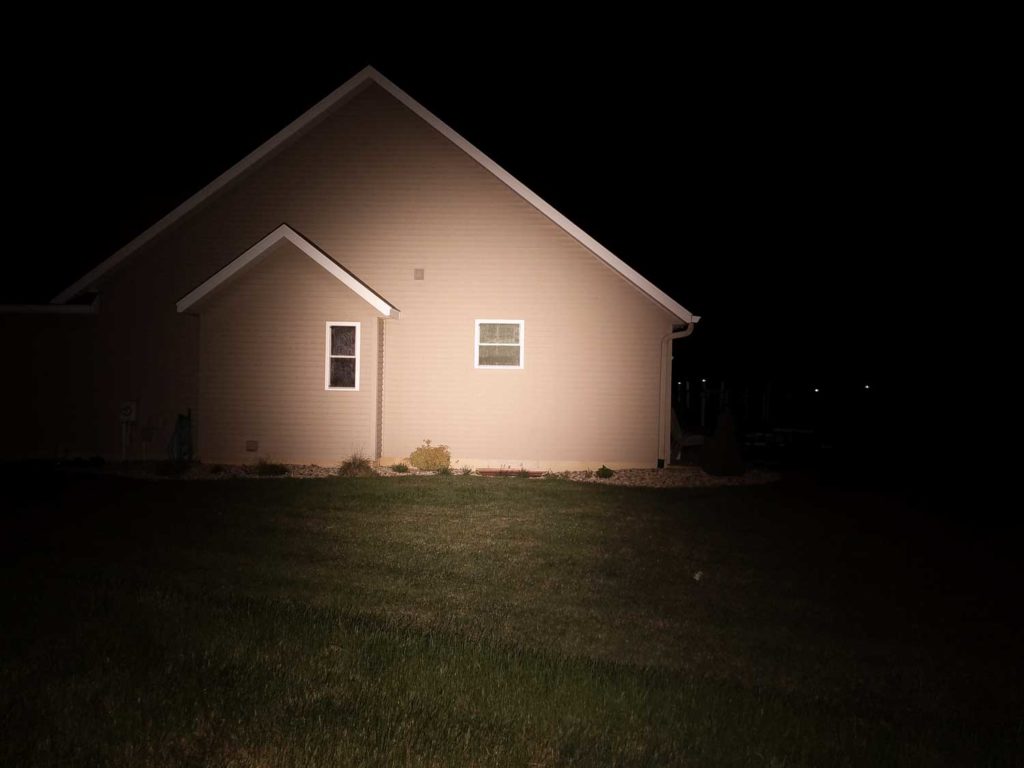
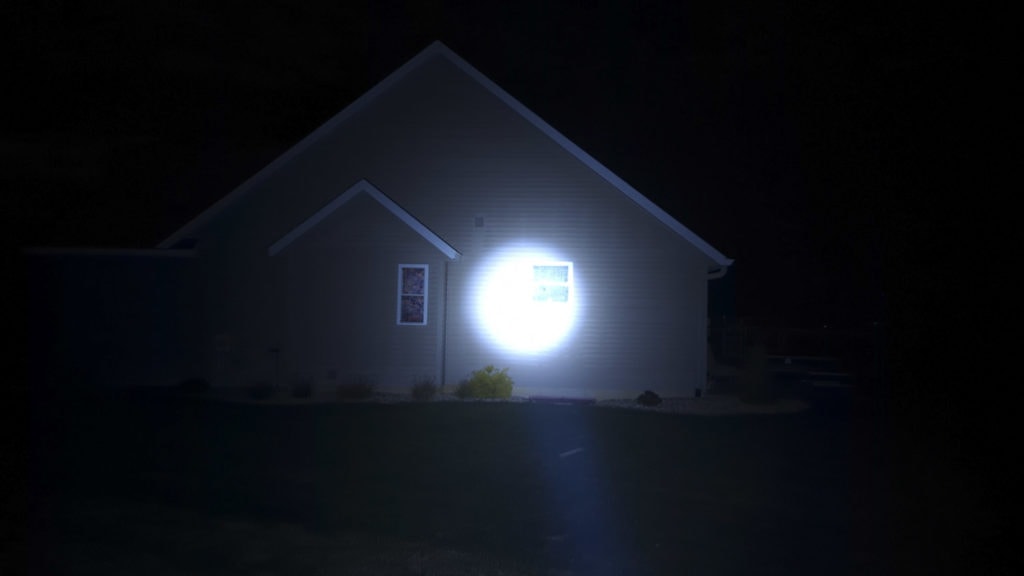
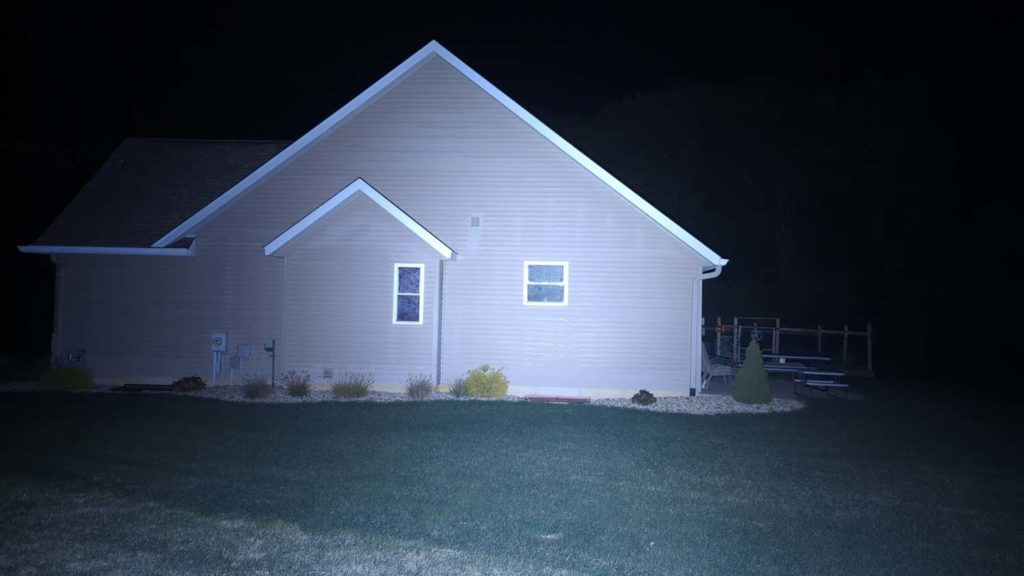
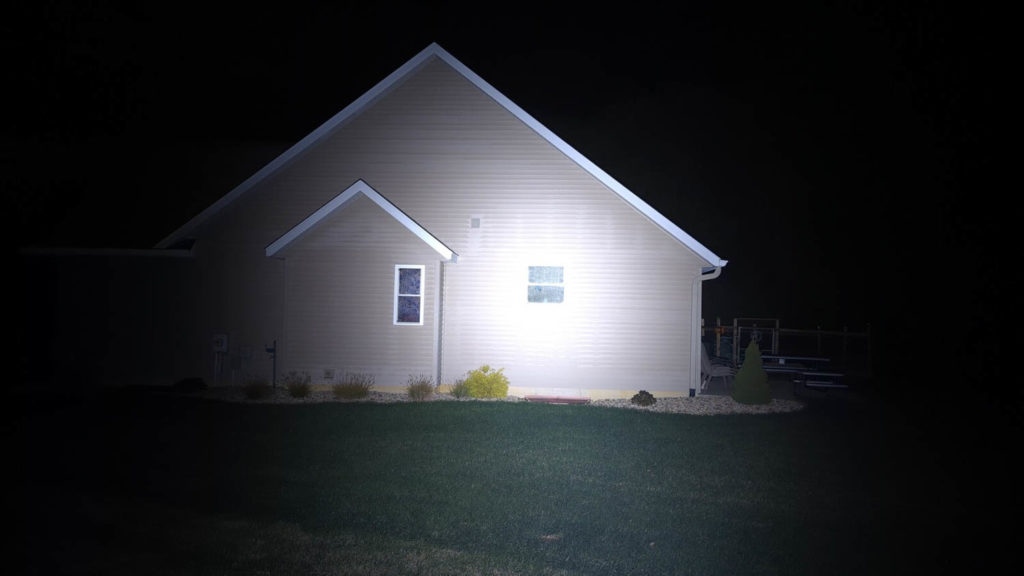
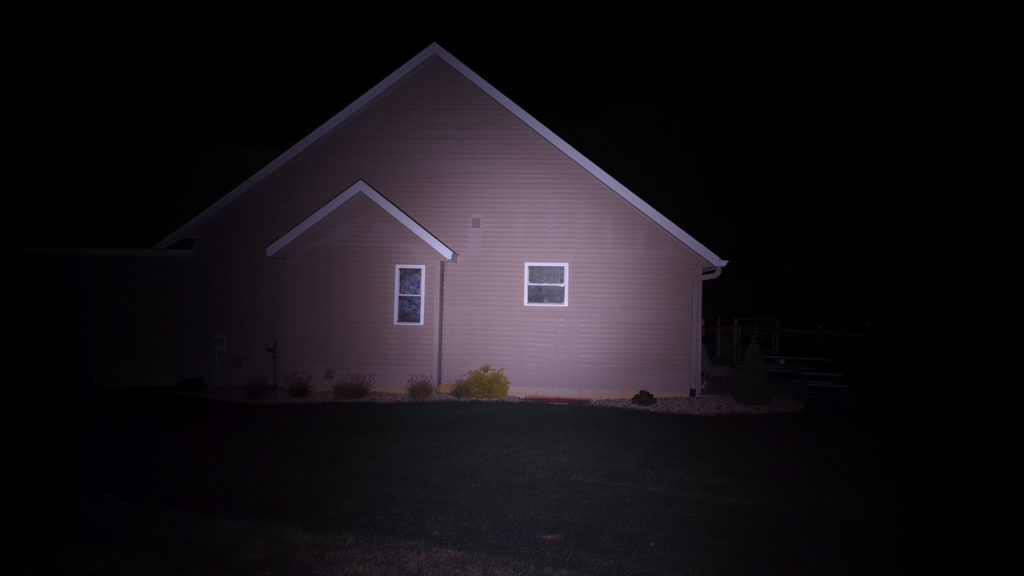
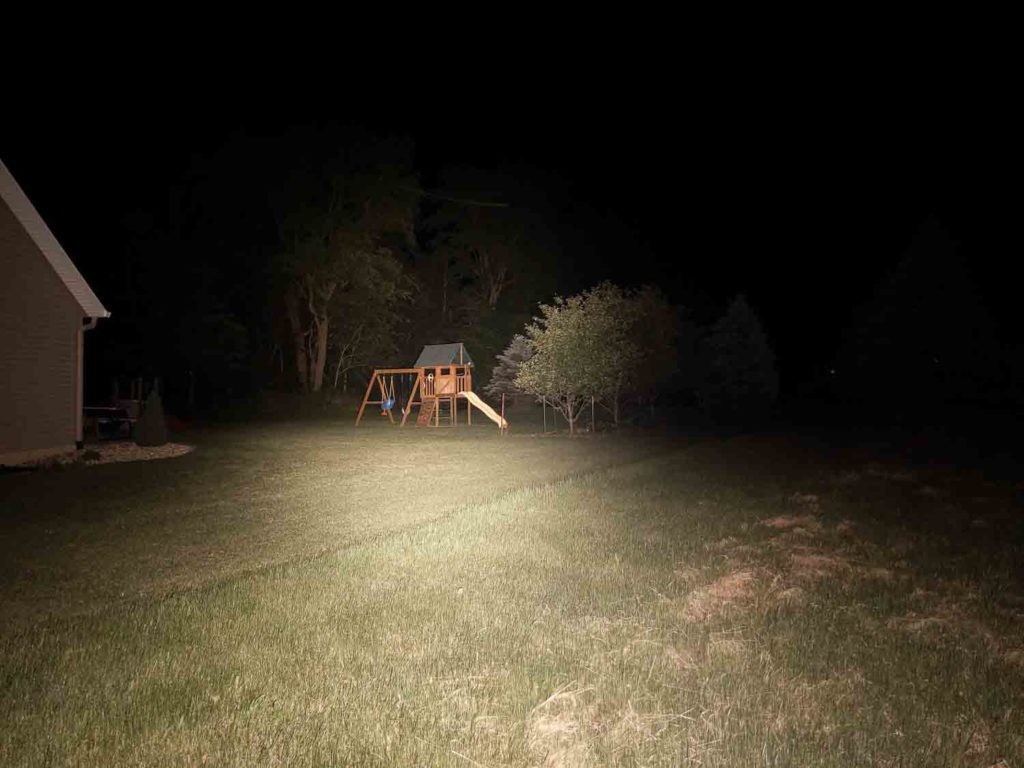
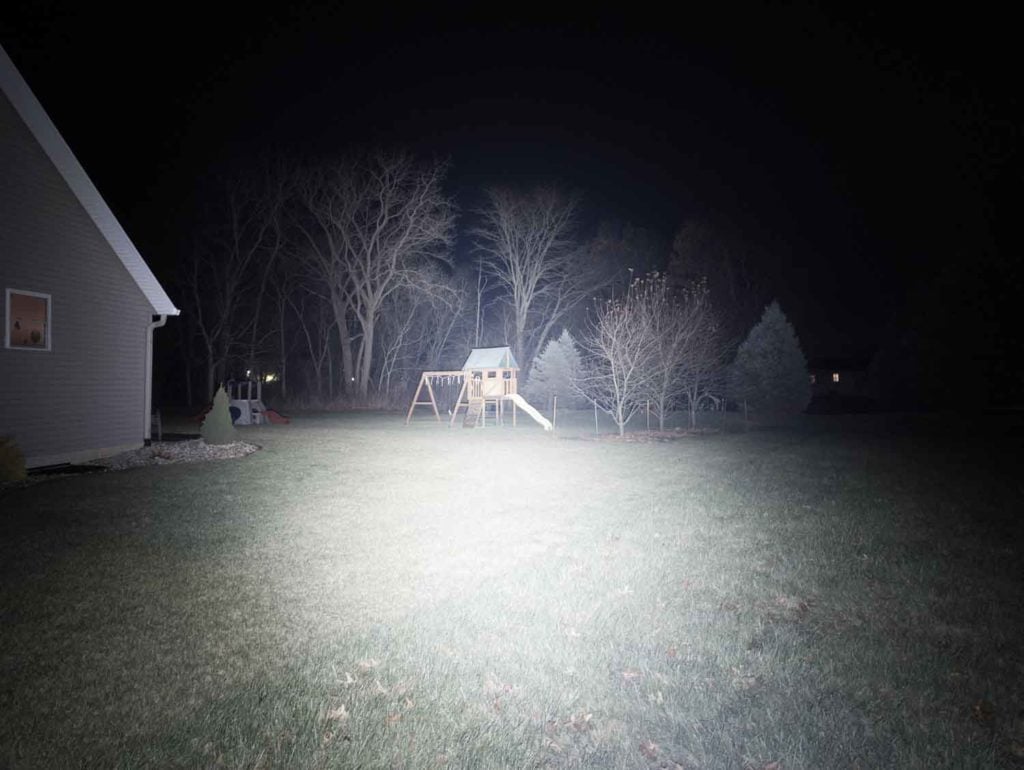
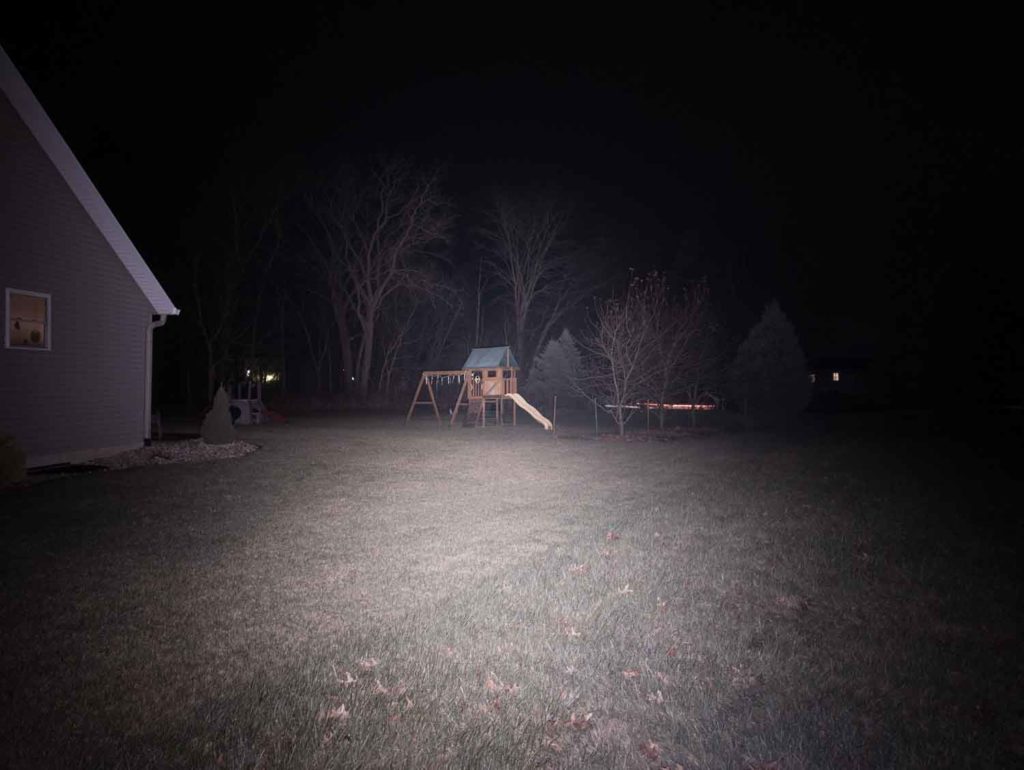
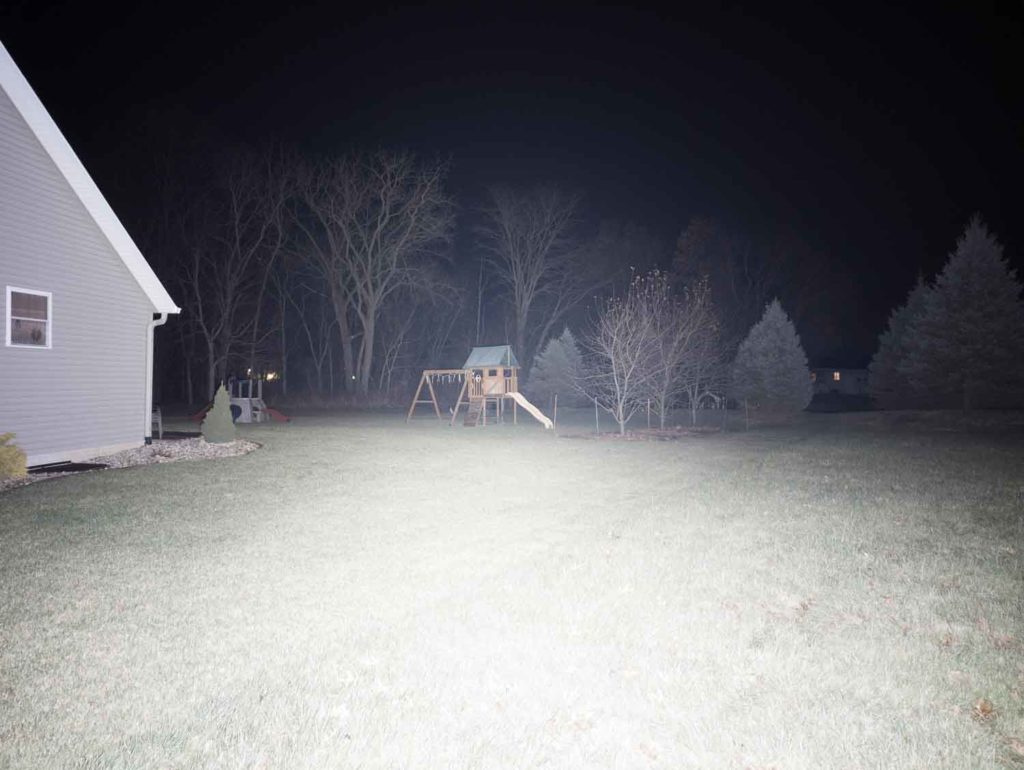
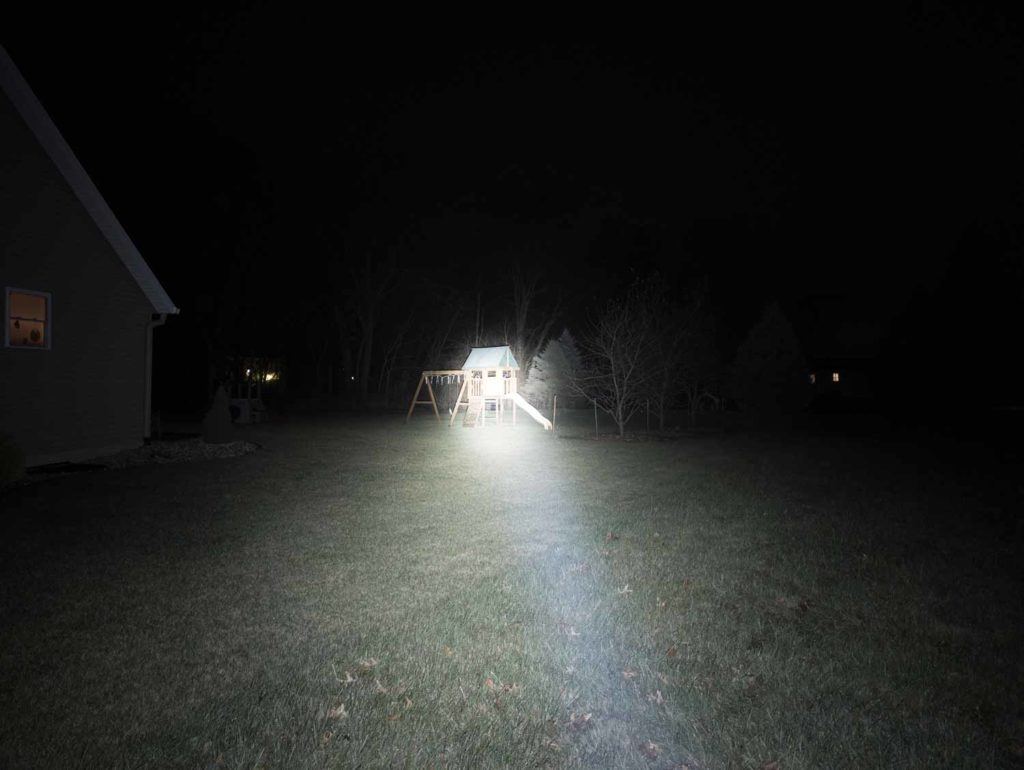
Disclaimer: This flashlight was sent to me for review at no cost by Sofirn. I have not been paid to review, nor have I been holding back on problems or defects.
Final Verdict
Pros
- Fairly compact
- Very throwy
- Flexible yet simple UI
- USB-C charging
- Full kit
Cons
- Originally faulty review unit with dangerous charging
- Gets hot on Turbo and High
- Roller coaster output on Turbo and High
- Slightly misses specs
Explanation on star ratings:
1: Avoid: my phone flashlight would be a better choice – 2: Poor: significant defect or issues – 3: Average: some defects or issues but useable- 4: Good: recommended (minor issues) – 5: Great: highly recommended

4 stars: ★★★★
I came into this review really liking the new Sofirn IF22A. That narrow optic is quite nice, and when paired with the new Luminus SFT40 LED, it makes a great tight beam with nearly no spill. The UI isn’t overly complicated, but has all of the shortcuts that I look for: Moon, Turbo, and Lock-out. There’s even a momentary Moon mode in Lock-out. It really is well done.
Once I started to graph things out like output and realized just how hot things got (70°C) despite supposedly having temperature regulation, things didn’t seem quite as rosy. And couple that with the erratic up-and-down undulations towards the end of the Turbo and High runs… let’s just say that Sofirn’s temperature regulation could use some work.
And then there’s the built-in charging. My original review unit seemed faulty and way over-charged the battery. The replacement unit, however, charged just fine. I would advise that you double check your cell voltage after a charge cycle – if it’s too high, reach out to Sofirn for assistance.
All in all, I think the Sofirn IF22A is a great light… with some caveats. It’s a pretty nice compact thrower for the price. It’s definitely a cool light, just keep an eye on that charging for the first few cycles and mind your mitts when running in Turbo or High for extended periods..
Buy your Sofirn IF22A here:
1lumen selects and reviews products personally. We may earn affiliate commissions through our links, which help support our testing.